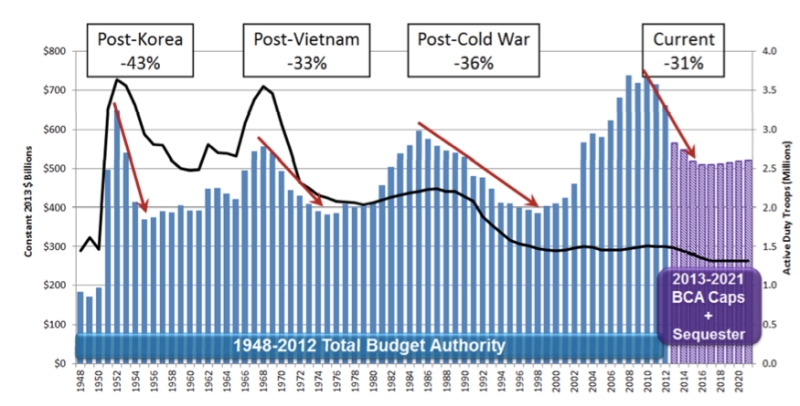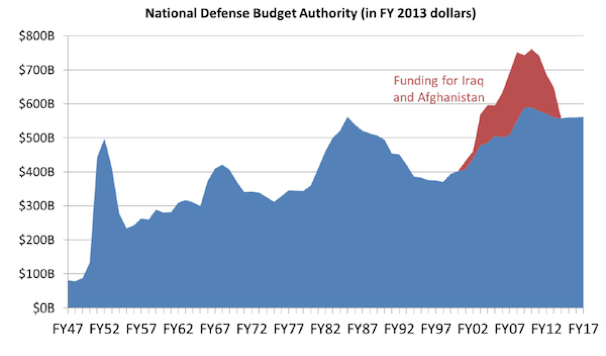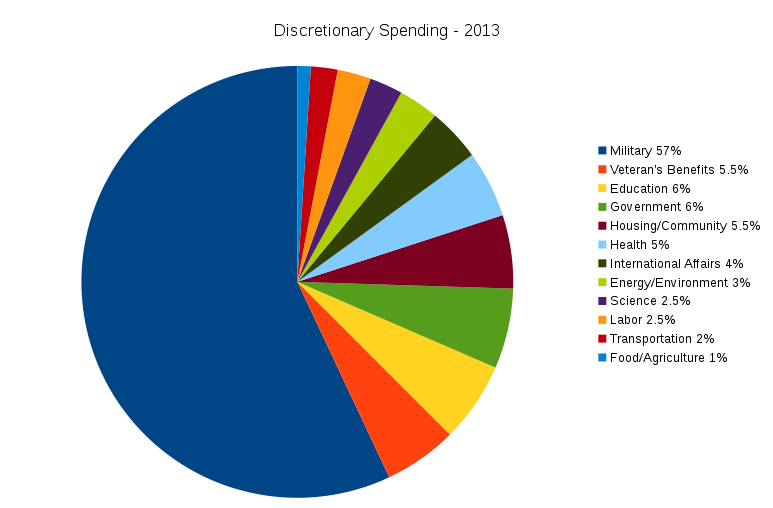The end of World War II saw a great many changes in the way the world is today, so many that people born after this watershed moment cannot remember or imagine a world different than what they have always lived in. This world is radically different from what was before. There were many changes throughout the world. Most were in the developed countries which would affect the developing countries as time went on. One of the biggest changes, which would affect the whole world rather quickly, was the development of the National Security State within the United States and the subsequent development of the Cold War between the United States and its allies and the Soviet Union and its allies. This Cold War would be played out around the world and not just, or even mostly, in those two countries.
The world changed after the Second World War in so many ways. Many so-called third world countries that were colonies of major powers, such as India as a colony of Great Britain, were allowed to choose their own government. This allowed a great many countries, mostly in Asia and Africa, to become independent and to try and choose their own government. There was even a movement of the non-aligned countries that tried to place themselves outside the orbit of either the United States or the Soviet Union.
The industries that developed during the Second World War — especially in the United States since it had not been invaded or directly attacked — subsequently released many consumer products based on the developments to support the war. People had been starved for new consumer products during the war, so that after the war the bought the new offerings willingly. Not only were consumers the recipients of these new products, but also industries, such as agriculture, were willing purchasers of these new offerings.
While a couple of plastics, such as Bakelite, existed before World War II, the real explosion of plastics and other artificial materials – the pictures of women trying on nylon stockings right after the War are famous – came right after the War, encouraged by all the development that happened to support the war effort. Plastics of all forms have begun to dominate our society, including the computer you are viewing this on, and all of the plastic garbage has now begun to accumulate in five zones in our oceans as well as mount up in our “sanitary” landfills. We do not realize that there was a time before plastics were an omnipresent feature of all our landscapes. As the Dustin Hoffman character was told in the 1967 movie The Graduate, plastics are indeed the future.
While fertilizers for crops existed for a long time, the real use of inorganic chemically-created fertilizers took off after World War II, for much the same reason that plastics became increasingly popular. Chemical industries, some of whom had been active with the Nazis in Germany, gained a lot of power and strength during the war. But of course during the War most of the demand on these industries was to support the war effort, on either side; after the War, all the energy that had driven the chemical industries was available of peacetime use.
What has been said about plastics and fertilizers can apply to many other created compounds. The period after World War II became the world of “Better Living Through Chemistry” as the modified motto of the DuPont Corporation had it. And that is what the post-war world was all about. Many, many things were created in the laboratory and sold to the public, plastics of all types, pesticides and insecticides of all types, and weed killers. All homes now have many toxic chemical compounds that are used for things from cleaning the toilet to ridding the house of ants. One can take a tour of any modern house to get an idea of the full extent of artificial chemical compounds everywhere.
Before the Second Word War, most food was organic. The concept of “conventional” or “non-organic” food did not exist, even though there were a few artificial chemicals used in agriculture. In the Twenties, there were no ”Organic” sections of supermarkets; in fact, there were relatively few supermarkets in existence before World War II. But soon after the war, chemicals were used to create a faster growth of vegetables or to kill weeds. Foods grown without the use of chemicals became more and more rare.
Along with this process was the creation of industrial agriculture. This was was a case of driving the small, family farmer into the city and the rise of large scale farming and industrial feedlots for cattle. As a consequence there was no more grazing in the field, small cramped warrens for chickens, and large scale disposal of the wastes of a massive number of pigs confined to a small space. The introduction of genetically modified organisms (GMO) was just another step along the path that was set out in the years following World War II.
Television was another phenomena that existed before the War, but came into prominence after the War. During the late Forties and early Fifties few people owned television sets, but groups of people would gather in front of shop widows displaying large televisions to catch the latest shows or breaking news events. The effect of television, and not just television advertising, on the development of “culture” is far reaching, and has not stopped yet. One can notice that the whole of political campaigns changed considerably after enough people had television sets that they could watch national political conventions. The first television president debate, now a fixture, was inaugurated in 1960 for Kennedy and Nixon after there were enough television viewers. And the difference that television made is illustrated by the fact that radio listeners thought Nixon had won the debate, while television views, who could see the haggard face of Nixon (recovering from an illness) thought that Kennedy had won.
I will mention one further change in this period before we move on to the mammoth event that dominated the world for the next 45 years. Along with the industrialisation of agriculture practices, ocean fishing received a big boost. Larger and larger ships were launched, harvesting more and more fish, to feed a growing populace. This fishing was so huge that, over time, it decimated the stock of fish in the ocean, which people somehow seemed to believe was limitless. This occurred at the same time that runoff from the factory farms sent pesticide residue into the oceans, creating dead zone devoid of oxygen and fish, and remnants of all the plastic being used on land were also ending up in the oceans
One big event that happened in this period, whose significance can not be overstated, was the dropping of two atomic bombs on the country of Japan. This was something that had never happened, or really even been contemplated (except for a few science fiction writers such as H. G. Wells or Cleve Cartmill ) before, and it changed the way the world looked at the future. Almost overnight, it became possible to believe that the entire world could be destroyed in a short period. As some scientists and writers realized at the time, the world had changed for good. We can not begin to imagine the effect of this since most of us have lived with the threat of nuclear war all our lives. I think that when we look back at this period from the future, we will see that a mass insanity gripped the world because of the knowledge that we could literally destroy humanity.
The significant astrological event happening at the end of World War was the midpoint between the three outer planets: Pluto at the midpoint of Uranus and Neptune. This was only the second time this century that such a configuration had happened, and note that in the midpoint shown, Pluto is at the apex of the midpoint. This is not common; most often Uranus is at the apex as was the case for the first midpoint of the century as discussed on August 22. This is significant since Pluto rules nuclear bombs, which were of course unknown before this midpoint happened. Pluto is also prominent in the aspect representing the shadow side of the USA, Pluto semisquare Ascendant, as has been discussed before.
As I have said, these midpoints, at most three a century, indicate a sea change in society so that the future is entirely different from the past. And that was certainly the case with this one. For example, almost everyone believes that high defense spending of the US has always gone on, but it is a rather recent development; essentially the high defense spending needed for World War II never decreased by that much after the war, though our lifestyle certainly did.
In 1945, right after the Yalta Conference, Franklin Roosevelt went to Saudi Arabia for a meeting with the King of that country. As a result of that the world has gotten oil from that country and the rest of the world has looked the other way. Saudi Arabia has backed very reactionary elements, such as Osama Bin Laden, and nothing has really been said to them, while other countries which do not provide the large quantities of oil are subject to much pressure from the United States. As a result of this meeting the world has had much access to oil but a whole host of problems — see the current Middle East crises for an example — are the result.
During the war, companies were not allowed to increase the wages of their employees, so instead they gave them health care plans. That decision, made to skirt the law, has had enormous repercussions into the present time. Company-provided health care has been seen as normal, giving rise to health insurance companies that exist to this degree nowhere else.
But perhaps the most significant event of this period, and the one that gave its name as title to this article, was the formation of the National Security State (NSS). Few people realize what a change in our military expenditures has happened since this critical turning point. Before the Second World War the United States spent relatively little money on “defense”. In fact, before the NSS there was no Department of Defense but rather more more accurately named Department of War. Gore Vidal calls this inception of the National Security State a coup d’etat; I’m not sure if this is a metaphor but it certainly an apt description to what has happened in this period. This led to increased spending for “defense” after the war and the Pentagon, which was built during the War, become a very public symbol of the United States’ fascination with the military, something I’m sure would have alarmed the Founders, who always warned about foreign entanglements and a standing army.
There are at least two ways of measuring the amount of money spent on defense: percentage of GDP or adjusted dollars. The graphs below show both. Since the GDP has increased faster than the defense budget, the actual dollars figure is a more accurate way of showing money spent.
The final way of looking at our defense expenditures is as a percentage of the budget. In other words, how much of the money that the federal government collects in taxes is spent on military-related items. But there are several ways of answering this question that are deceptive, to say the least. The first is to include income that the government has no control over spending, most obviously Social Security, as part of the budget. Social Security taxes — FICA — are something that most people have seen as a separate tax on their income checks. This money goes to a trust fund and must be spent for Social Security payments, it is not discretionary. But often the SS expenses are included as part of where the government money goes. This is as deceptive as, for example, if someone gives you $5000 for safekeeping while they are out of the country, only to expect it back when they return. It would be deceptive to consider the $5000 as part of your money when you consider how much of your money is spent for rent, since it is not really your money but you have it only for a short time. In the same way, it is deceptive to consider money collected as Social Security taxes as part of the money the government can spend as it wishes.
Another problem is neglecting the military related expenses that are not in the defense budget. The could be separate money for wars that are not part of the initial budget, money for the many covert services, money in the space and nuclear programs that are military related, but the two biggest items that are often not considered are veterans healthcare and pensions for ex-military personnel, which can go on for many, many years after the initial war they served in is over, and interest on the debt, much of which was borrowed to pay for a given war.
When you make the adjustments, the percentage of the budget spent for military purposes — past, present, and future wars — is much higher than commonly assumed. The amount these days is 62%, which tells us that the main purpose of our government to to conduct military operations. This is something most people would rather avoid knowing.
Most of the graphs are from the Washington Post.
This first graph indicates the national defense budget in 2013 dollars. Since there has been much inflation since 1945, it is necessary to adjust the dollar amount to get an accurate comparison with past expenses. We can see that the defense budget ballooned in the late Forties and early Fifties because of the new Cold War and the Korean War. There is a bump in the late Sixties and early Seventies because of the Vietnam War. Then there is the huge bump in the Eighties because of the Reagan defense buildup; during this period the defense budget got to be greater than the Cold War beginnings of the early Fifties. Finally we can see that about 2010 the defense budget rose to another peak, and this is without counting the expenses of the wars in Iraq and Afghanistan, which were separate. When these are added in — red peak — the defense expense are 50% higher than in the beginning of the Cold War, even though the Cold War supposedly ended in 1991. Note that these figures do not include items mentioned above such as veteran’s benefits.
 The next graph shows the expenditures again, from 1948 to 2012. You can see the fall-off after Korean, Vietnam, and Cold Wars ended. It also shows the fall off after the current wars are ended. As I write this we have sworn a “bombing campaign” on what is called ISIL or ISIS or IS in Syria and Iraq, so the expenditures will probably go up again.
The next graph shows the expenditures again, from 1948 to 2012. You can see the fall-off after Korean, Vietnam, and Cold Wars ended. It also shows the fall off after the current wars are ended. As I write this we have sworn a “bombing campaign” on what is called ISIL or ISIS or IS in Syria and Iraq, so the expenditures will probably go up again.
The third graph shows expenses as a percentage of GDP. Note that the bottom blue section is labelled “Entitlement” and remember what I said above that these are not part of the discretionary expenses, since most entitlements are from a separate part of the money collected from taxes; they are from FICA and not income taxes. The part we are interested in is the red second band. The defense expenses went way up during World War I, just before 1920 and them returned to almost the same level, about 1 to 1.5%. They went up again during World War II in the Forties, but in this case after the War the defense expenditures did not go back to what they were before the war, but only fell to 8%, at least four times greater than what it was before the war. These defense expenditures decreased as a percentage of GDP over time, but only because the GDP increased at a faster rate. The true increase is shown in the first two graphs.
To sum up, spending by the United States for defense increase greatly after World War II, and has remained at elevated levels ever since. One can argue that this increased defense spending was necessitated by the threat of he Soviet Union, even though we were allies with them and they suffered the lion’s share of causalities during that war, but the defense spending did not fall after the Soviet Union did, and in fact the spending now has increased to almost double what it was at the end of the Twentieth Century. The question remains whether the defense spending increased after the war because of the threat poised by our erstwhile allies or if the threat of a greatly reduced spending for the military caused the danger of the Soviet Union to be seen. The Great Depression before World War II never really ended until the increased spending for weapons needed for the War; perhaps after the War some were afraid that the depression would return unless the defense spending remained at high levels. This is called Military Keynesianism.
Another big event of the period, which was to influence the post-war world and still has repercussion today, is the Bretton Woods Conference of July 1944. Delegates from many countries met in New Hampshire to plan out the world economy after the War was over. The International Monetary Fund (IMF) and the World Bank were both formed during that meeting. It also resulted in an agreement among the countries of the world to maintain a certain type of order in the world’s financial system. That agreement was broken when Richard Nixon, in August of 1971, took us out of the Bretton Woods system. While the system was working, it was a financial golden age for American workers. The rate of unionism was at a high level, and many of these same workers joined the middle class. College education was relatively inexpensive and many people poured into colleges, resulting in an educated workforce and the many student protests that marked the decade of the Sixties. Government intervention to assure the financial well being of the nation’s populace became more used.
This final graph shows the true cost of defense after the end of the Cold War. Very few people make this knowledge available because America wants you to believe that it is not a war-based economy, but if you remove “entitlements” (as mentioned above) you see the real figure, that 62.5% of the budget — Military and Veteran’s Benefits — goes to past, present, and future wars. This data is from the American Friends Service Committee. It is clear that our country is dominated by defense spending, much, much more that any time in our history before this period when the National Security State took power in the United States, something that President Eisenhower warned of: the Military-Industrial Complex.





6 thoughts on “Birth of the National Security State”